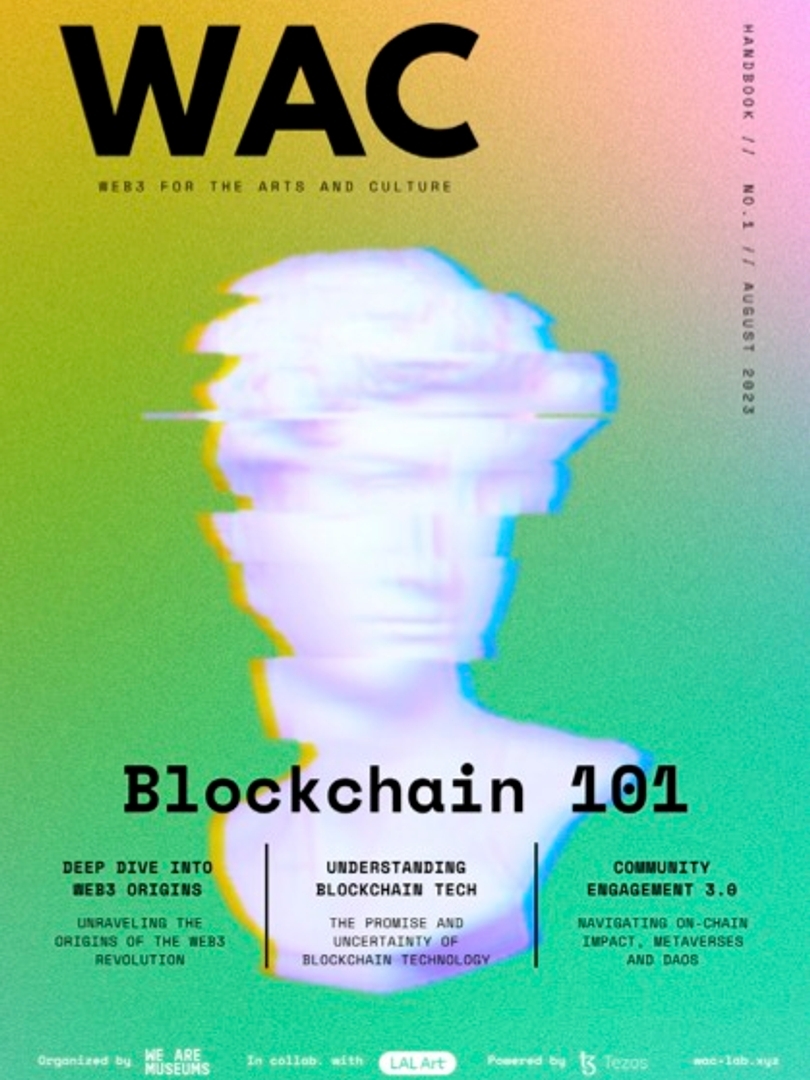Take a deep dive into the origins, technology and community of Web3 with We Are Museum's latest publication: the first WAC Handbook!
Often times, people ask me for primers on the blockchain, wallets, DAOs and the metaverse with a focus on the cultural sector. Our friends at WAC Lab have just released the WAC Handbook, which offers answers to all of these questions and is based on research conducted during the WAC Fellowship.
As a contributing partner to WAC, The Blockchain Art Directory is delighted to share this combined resource with the community. Read on to learn about the programme and its findings below.
What is WAC Lab?
Unlocking Web3 for the Arts and Culture (WAC Lab) is a web3 innovation laboratory where art and culture professionals can learn, discuss, and experiment with blockchain technology. Organised by We Are Museums and inspired by its decade of innovation acceleration in museums, WAC Lab was launched in December 2021 in Art Basel Miami. Fueled by systems thinking, deep listening, agile and futures literacy methodologies, WAC Lab offers multi-month programs to accompany cultural institutions through change and innovation.












What is the WAC Handbook?
This guide - WAC Handbook #1: 101 - is an introduction to web3 technologies in general, answering:
• What is web3, what makes it different from Web 2.0 and Web 1.0?
• What is a blockchain?
• What is a crypto wallet?
• What are fungible and non-fungible tokens?
• What are smart contracts?
• What is a Decentralized Autonomous Organization (DAO)?
• What is the metaverse?
• And throughout: why is this relevant to the arts and culture sector?
This handbook is useful for anyone in a cultural institution who wants to find
out more about these technologies. But some parts may be more relevant to you, personally, than others. For many of you the environmental, social, and governance implications of these technologies is one of the top priorities.
The energy usage of a blockchain like Bitcoin is due to its computationally heavy proof-of-work consensus mechanism; we talk about that, attempts to “greenwash” that mechanism, and compare it to the proof-of-stake mechanism that powers Ethereum and Tezos with a tiny fraction of the energy usage.
We also cover the use of blockchain for social change and activist projects as with Meta History Gallery and the Worldwide Whales project. This illustrates how NFTs are being used as a sustainable mechanism for raising funds for those causes as well as promoting positive change.
For collection managers and conservationists, this guide clarifies how NFT artwork is stored and how it can be properly collected and preserved.
We’ll introduce technologies like IPFS and Arweave, and go over what kinds of crypto wallet is suitable for an institutionto hold artwork.
WAC Lab is made possible by the support of the Tezos Foundation. This season was co-produced by We Are Museums and TZ Connect, and is a collaboration with the Blockchain Art Directory and LAL ART. To produce and run the entire program, the team included Diane Drubay, Fanny Lakoubay, Maxime Laprade and Kitty Borissza, as well as Dani Jozsef, Tamas Hovanyecz, Katus Bartos, Anita Sengupta, Nadeya Hassan, Evan Forman and Victor Motta.
To read the complete WAC Handbook #1: 101, please download here.






